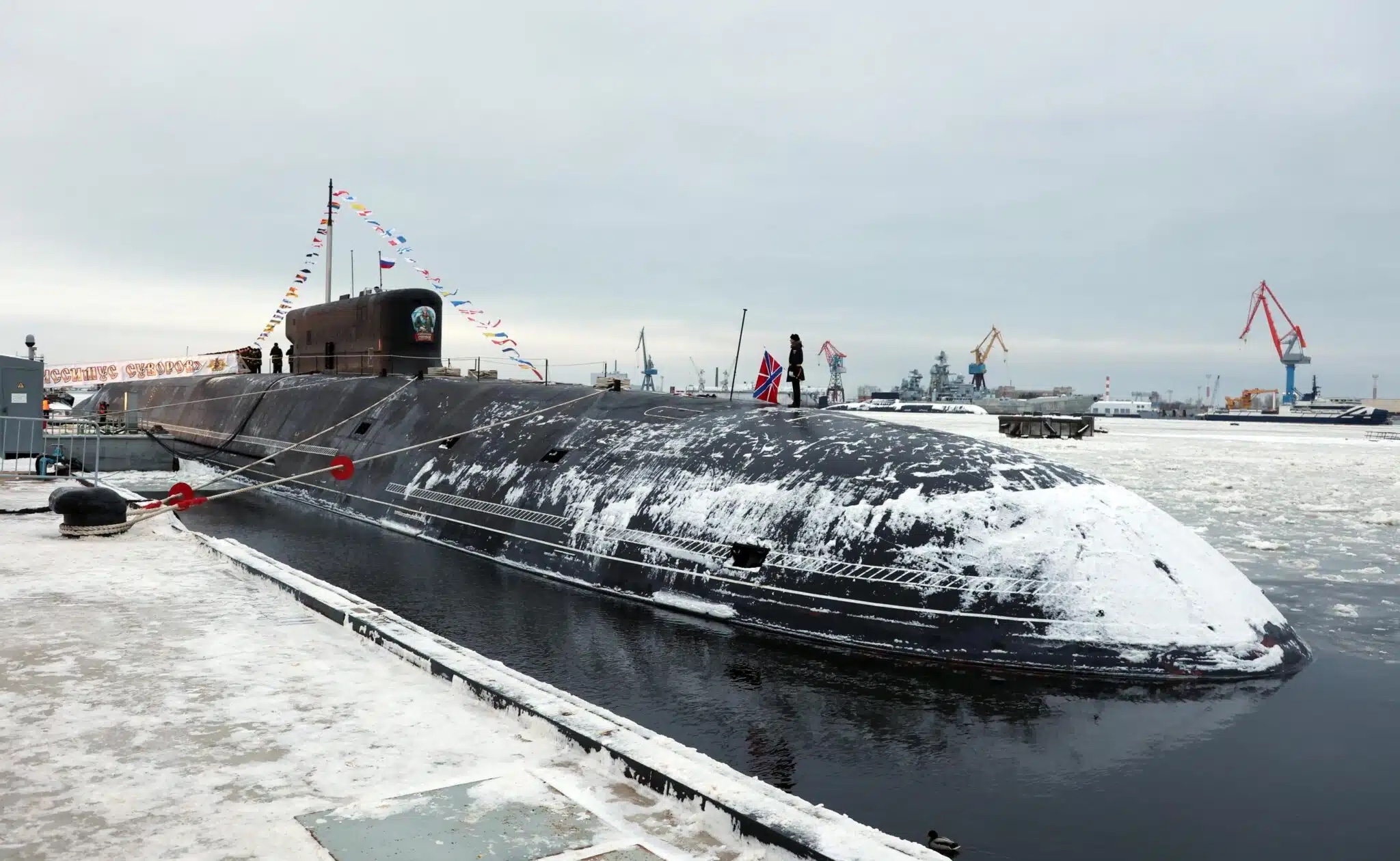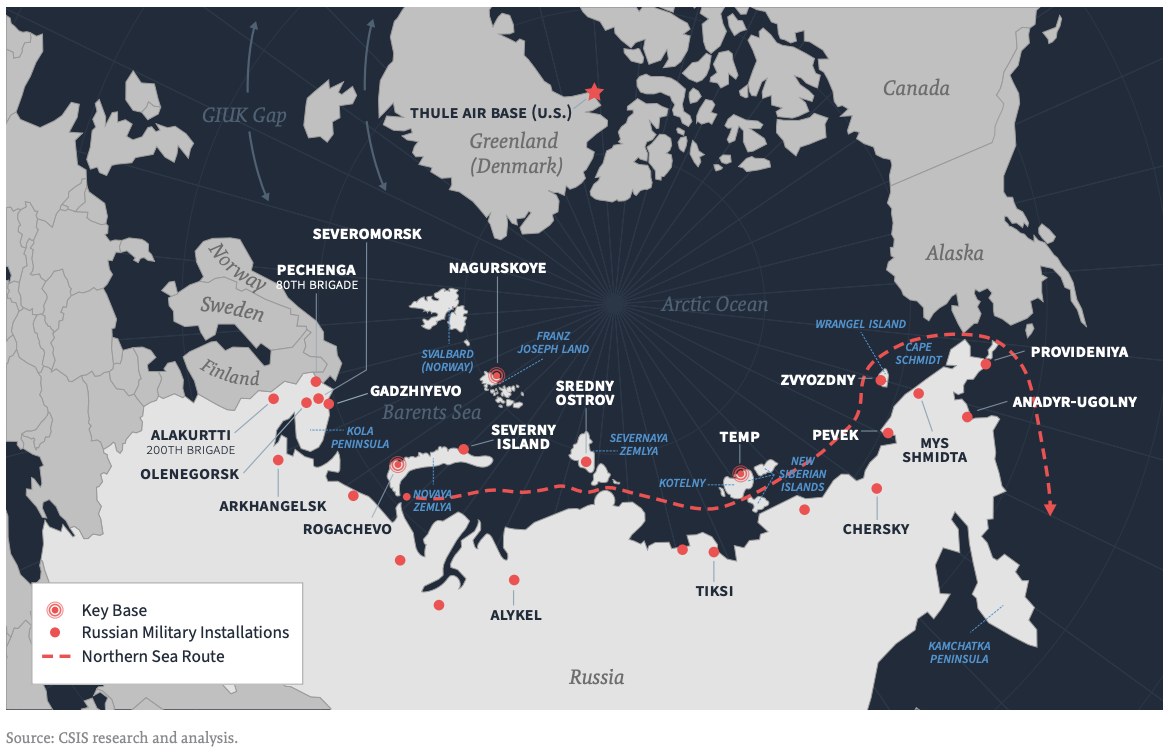
Russia’s Northern Fleet’s ballistic missile submarines and strategic bomber force’s capabilities remain intact despite the heavy toll the country’s invasion into Ukraine has had on its naval infantry, army and special forces assigned to the Kola Peninsula, a new report from the Center for Strategic and International Studies found.
The Arctic remains “of great strategic value to Russia,” Njord Wegge, a professor at the Norwegian Defense University College, said this week as the report was released. On the military side, the Kola Peninsula in the Arctic provides a gateway for Russia’s Northern Fleet’s attack and ballistic missile submarines to move through the Greenland, Iceland, United Kingdom [GIUK] gap to reach the Atlantic
The “Russian Arctic Threat” report noted Western-imposed sanctions on the Kremlin for the Feb. 24 invasion may have a future effect on Russian defense industry’s ability to deliver future strategic capabilities. The report mentioned their effect on ship construction and updating conventional land, sea and air weapons systems that rely on imported technology. The report cited the benefit and importance of keeping tight sanctions on dual-use computer chips that could be used for Moscow’s conventional forces in the Ukrainian fighting.
It remains to be seen how sanctions will work over the next four years, said Colin Wall, associate fellow in CSIS’ Europe, Russia and Eurasia Program. For now, “Russia will probably have to make tradeoffs” in spending and where it commits military resources as long as the war continues.
Russia has already deployed advanced tanks to the fight and could soon be sending advanced air defense systems to better protects its forces against a spring offensive, Wegge said. Both moves put further strain on the Russian industrial base.
In addition to smuggling and trading with partners who ignore the sanctions, “China has been important partner in the past” and could be again in filling in these military technological gaps, Wegge said. So far, Beijing has not stepped in to fill Moscow’s immediate military needs as Iran did with drones.
“Russia has had 10 years of successful modernization” of its forces that it can fall back on, he said, specifically citing hypersonic weapons and silencing its submarines.
Wall, who co-authored the report with Wegge, added, with Finland and Sweden applying for NATO membership Russia’s goal of “protecting its second strike capability” is of heightened concern in the Kremlin. Moscow’s other strategic goals in the Arctic are: protecting the Northern Sea Route as a potential major trade route between Asia and Europe; and protecting its energy industry in the region, a major source of outside revenue.
When Sweden and, especially, Finland are admitted to NATO, the security equation in the Arctic will change. Both panelists agreed the High North has been a region of relatively low tension.
The report noted Russia’s defense minister warned “retaliatory measures are required” such sending more land forces to northwest Russia if the two are admitted to the alliance.

With Finland a member, the alliance would have better highway access and now rail access to the northernmost areas of Europe. In addition, Finland has a “broad mobilization base” in reserve manpower and stockpiled conventional arms, weapons and ammunition, Wegge said.
Wall described the Kremlin’s comments as “ratcheting up” tensions. He added it was unlikely immediately that United States or NATO would create a Baltic or Arctic Command in the near future.
“The Arctic is not going to shoot to the top of the priority list” of American immediate security concerns, Wall said. He expects U.S. presence to grow but to continue to rely on allies and partners to keep an eye on Russian activities.
Speaking at a Wilson Center event Thursday, Coast Guard Rear Adm. Michael Ryan, deputy commandant for operations, policy and capabilities, emphasized presence. “It’s about being there … to be successful” in providing security for the region, he said.
Adding the Arctic is a “unique domain” for security and military operations, Ryan said. The service’s expanded commitment can be seen in its building a heavy icebreaker and looking to buy another existing large icebreaking vessel to operate continuously there. Both are part of a long-term effort to rebuild the nation’s icebreaking fleet to three heavies and three medium icebreakers.
The CSIS report stated the Northern Fleet has two “ice-class” vessels in its number and can call up 46 civilian icebreakers when needed. Some of those icebreakers are armed.
Wegge noted at CSIS the American Marines and the Army’s 11th Airborne Division, based in Alaska, have stepped up training exercises in the High North with allies like Norway and large-scale exercises like Trident Juncture. For years, the Marine Corps has been prepositioning equipment in northern Norway to use in a crisis.
He added Norway can play a pivotal role in Arctic security in providing air and maritime awareness with its advanced platforms and technology.





